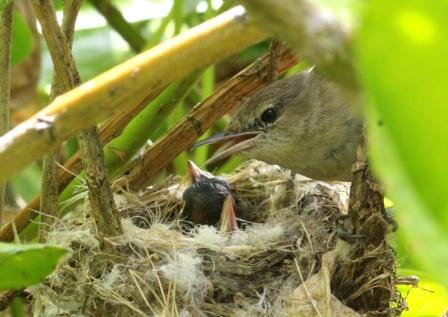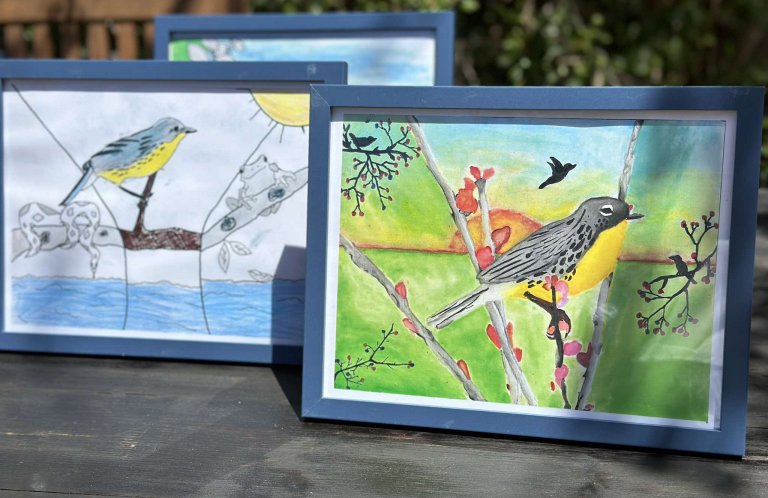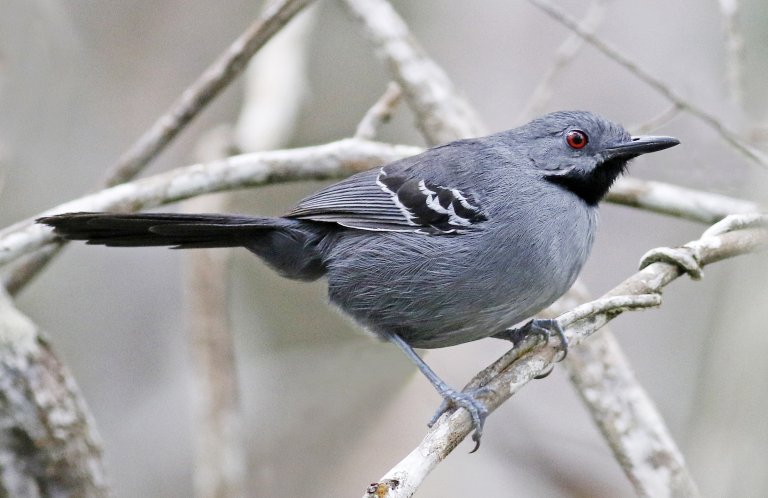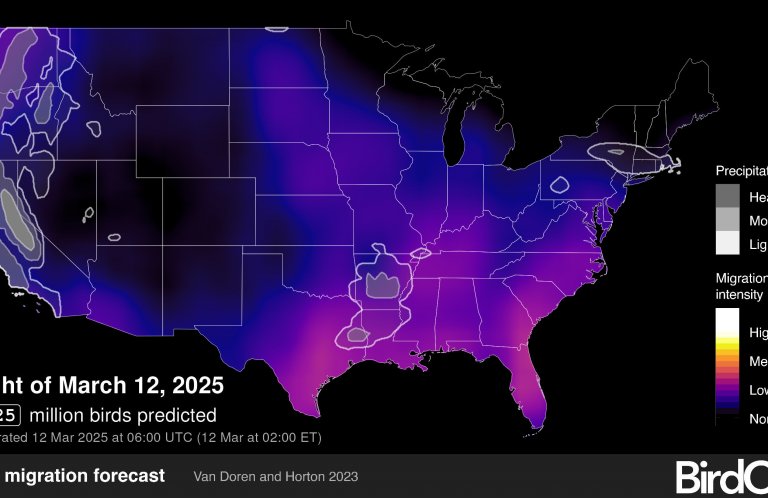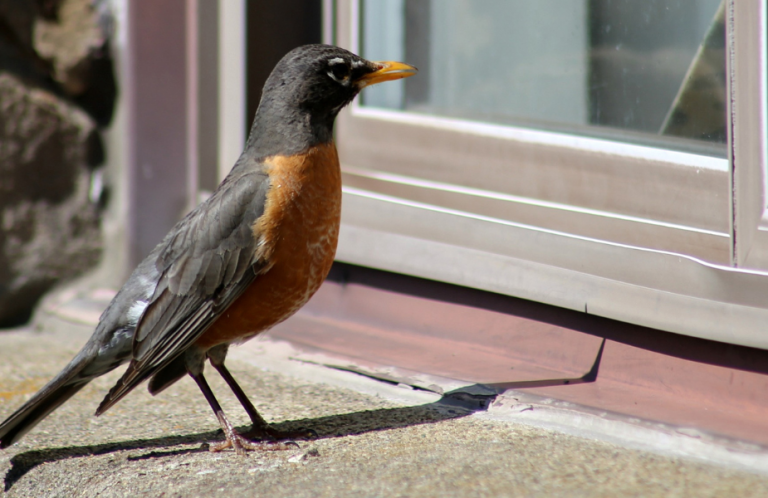More Millerbirds, More Problems … if You're a Field Biologist
22 July–4 August | By Megan Dalton
I was lucky enough to be one of the Millerbird monitors for both this and last year's tour, and one of the great things about coming back to Laysan is seeing first-hand how the Millerbird population has grown.
Over six months of intensive monitoring in summer 2013, Michelle Wilcox and I were able to confidently approximate how many Millerbirds existed on Laysan (121 adult individuals at the end of September 2013). Since the majority of the birds on the island were banded at that time, we were able to keep track of the number of breeding pairs and territories, along with their nesting successes and failures.
By the end, we felt like we knew ‘NIMI [Nihoa Millerbird] Land' well enough that if we heard a Millerbird singing, we could guess with reasonable accuracy which individual bird it was.
Trying to Catch Up
Now, the days of knowing each individual are long gone! The Millerbirds on Laysan have been prolific while we've been away, and there are many up-and-coming young birds that have carved out new territories between the already established ones. However, there are even more unbanded birds wandering about, who are—rather unhelpful for a field biologist—nomadic and inconspicuous until they get old enough to claim a territory of their own.
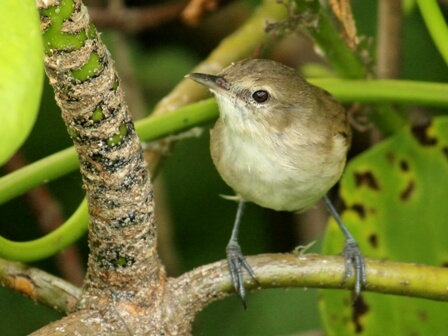
Just one of many unbanded Millerbirds on Laysan giving the biologists headaches. Photograph by Megan Dalton
Answering the question of how many unbanded birds there are, along with getting up to speed with all the other new developments, are proving to be the major challenges for Robby, Barbara, and me this season.
Restoring a Piece of Laysan
Laysan has a well-known history of ecological tragedy, specifically brought about by an introduced population of rabbits who devoured nearly all the vegetation on island in the 1910s and 1920s. I've been reading a lot of historical accounts lately relating to the natural state of Laysan just prior to that time period, when I imagine the island must have been near its peak abundance and vivaciousness.
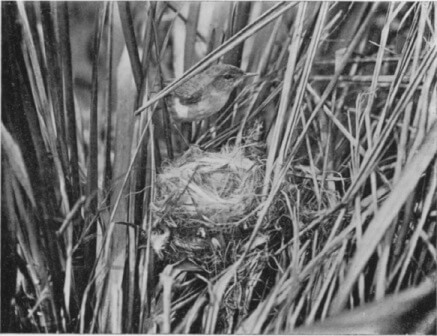
Rare portrait of the now-extinct Laysan Millerbird and its nest in native bunchgrass. Photograph by Walter K. Fisher, 1903
One of my favorite accounts was written by Walter K. Fisher in 1903. When describing the fearlessness of birds here, particularly some of the endemic land birds, he writes:
“While we sat working, not infrequently the little warbler, or Miller Bird, would perch on our table or chair backs, and the Laysan Rail and Finch would scurry about our feet in unobtrusive search for flies and bits of meat. Each day at meal-time the crimson Honey-eater [Laysan Honeycreeper] flew into the room and hunted for millers [moths].”
Another favorite passage by Hugo H. Schauinsland in 1899 states:
“After dinner, if we sat outside in the shade of our cabin to be refreshed by the tradewinds after a hard day's strenuous work, it would not be long before one of the pretty little brown birds [Laysan Millerbirds] would appear. It would alight on an available knee or perch on the back of a chair to boldly stare at us, or sometimes just to sing us its lovely song. Once, one of these brave little songsters decided to sing its favorite tune perched upon the upper edge of the open book that I held in my hands.”
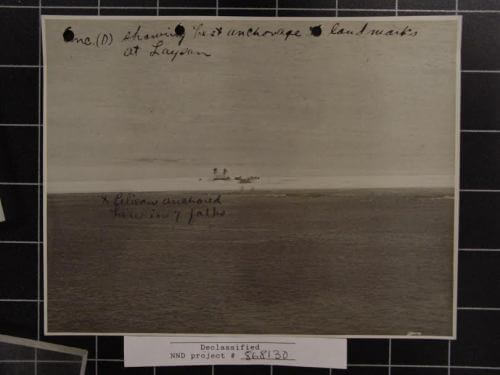
Laysan in its barren state, completely void of vegetation, as a result of an introduced rabbit population and their appetites, 1923. Photographer unknown
Many things have changed since then—the denuding of the island, the extinction of the endemic Laysan Millerbird, rail, and honeycreeper, along with several plant and insect species—but Laysan has also come a long way in terms of ecological restoration.

Panoramic shot of Laysan's northern interior as it looks today in 2014. This area is also known as “NIMI Land." Photograph by Barbara Heindl
Native bunchgrass, naupaka, and morning glory have recolonized the majority of the island where it once was barren, and a lot of hard work has been put into out-planting native shrubs and sedges as well as controlling and eradicating noxious weeds.
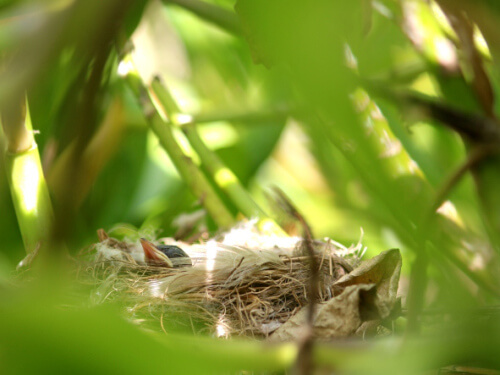
Young Millerbird nestling, part of a future cohort of breeding Millerbirds on Laysan, rests on the rim of its nest. Photograph by Megan Dalton
And now there's a growing population of Millerbirds once again, the ones recently translocated from Nihoa that are now living and thriving on Laysan. I look forward to the day when future biologists tasked with surveying Millerbirds are presented with the “problem” of tracking an overwhelming number of birds, with males singing in every direction, and perhaps a Millerbird or two alighting on the edge of an open book.
 Megan Dalton is from Salt Lake City, Utah, and has worked as an avian field biologist for several years on the mainland and in Hawai‘i. She is thrilled to be on Laysan again where she has recently reached her current life goals of being a momentary perch for a curious Laysan Duck and tricking both of her crew mates with her Millerbird song impression.
Megan Dalton is from Salt Lake City, Utah, and has worked as an avian field biologist for several years on the mainland and in Hawai‘i. She is thrilled to be on Laysan again where she has recently reached her current life goals of being a momentary perch for a curious Laysan Duck and tricking both of her crew mates with her Millerbird song impression.
References
Fisher, W. K. 1903. Notes on the Birds Peculiar to Laysan Island, Hawaiian Group. Auk 20: 384-397.
Schauinsland, Hugo H. 1996. Three months on a coral island (Laysan), 1899. Translated by Miklos D. F. Udvardy. in Atoll Research Bulletin. 432: 1-61. National Museum of Natural History, Smithsonian Institute, Washington, D.C.





































